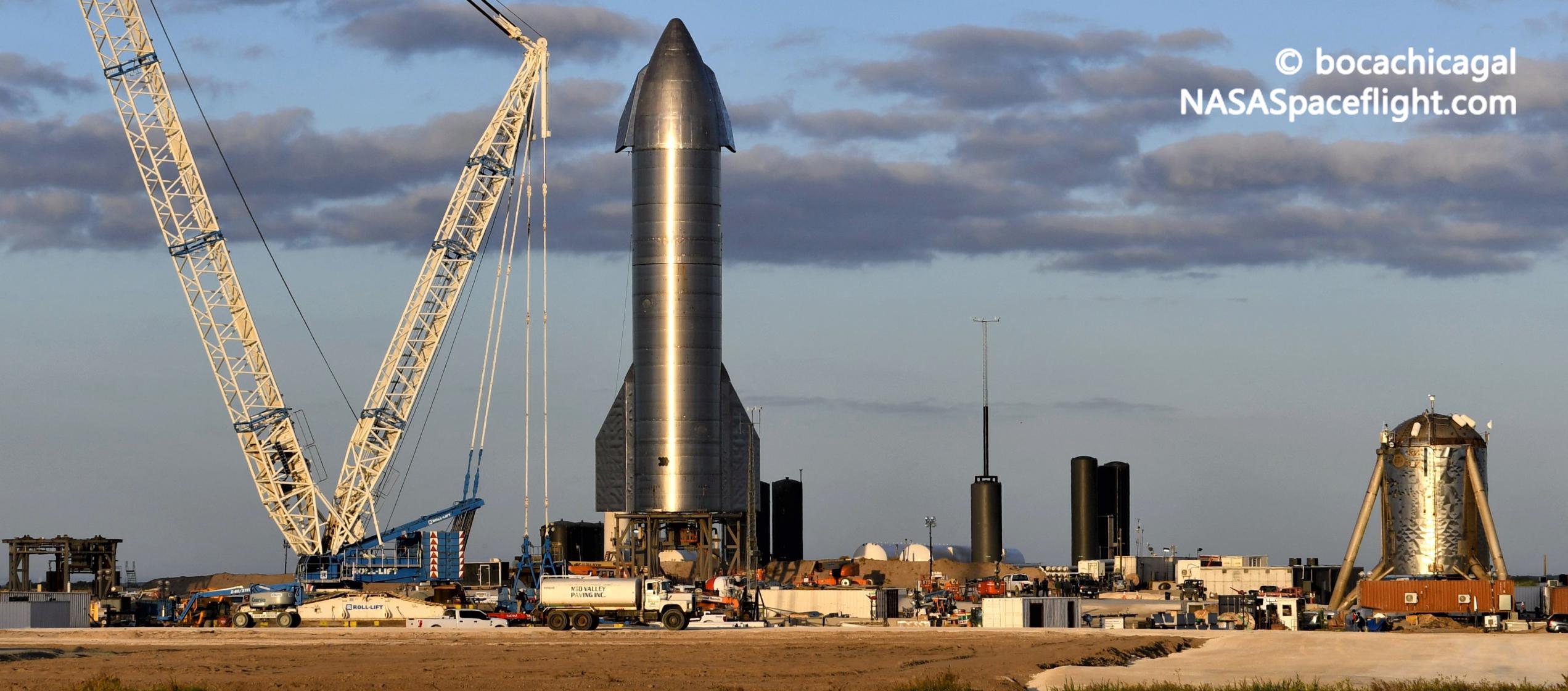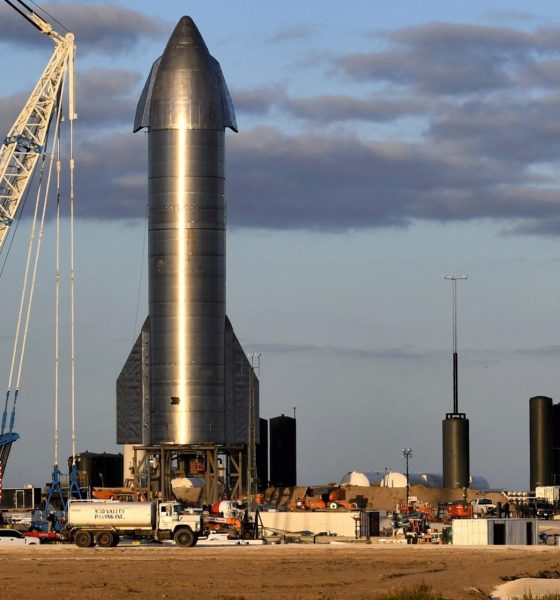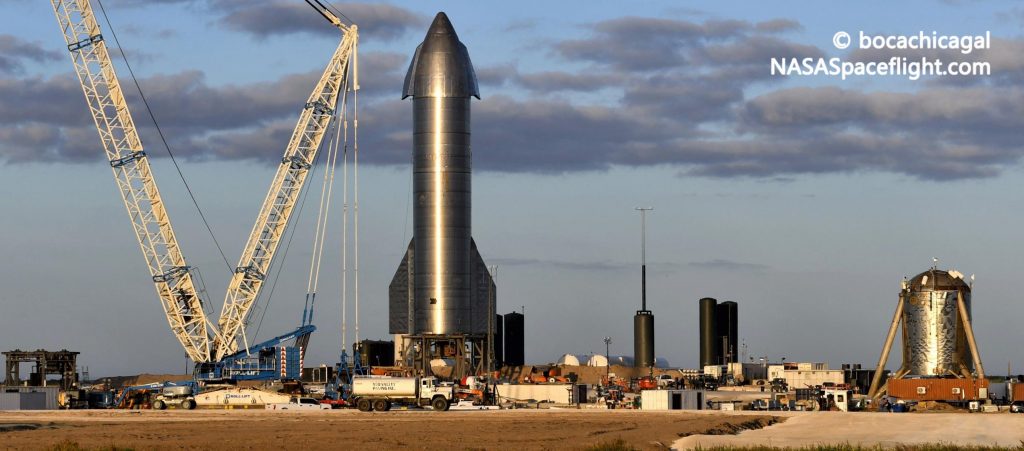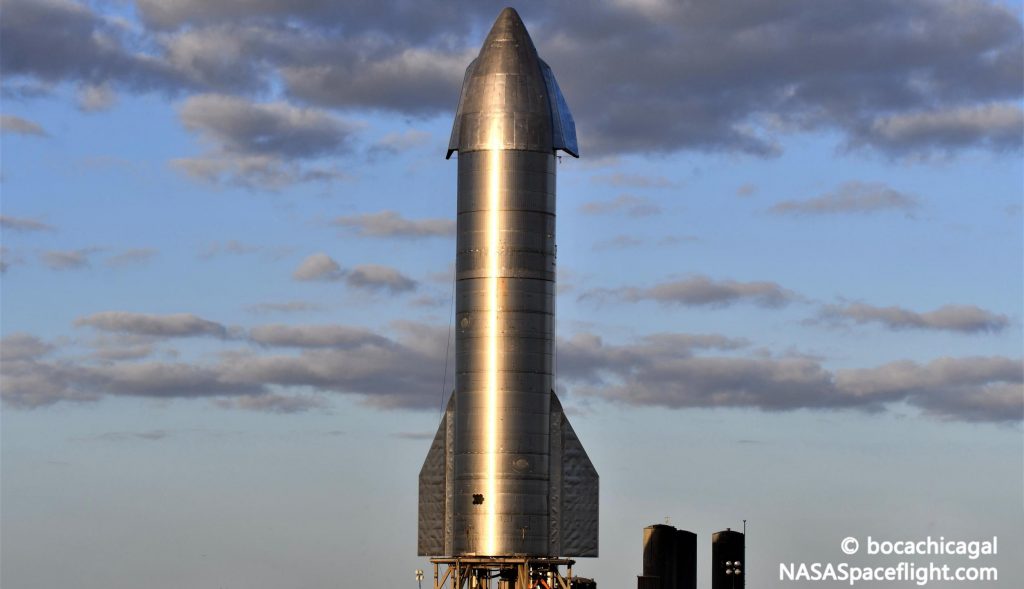

News
SpaceX’s high-altitude Starship launch debut unlikely before Crew-1
Update: SpaceX canceled its November 5th and 6th Starship SN8 static fire test windows on Thursday, delaying the next Starship test window to November 9th unless additional testing is scheduled on the 7th and 8th.
As previously discussed, SpaceX requested three road closures for “Starship SN8 Static Fire and 15KM Flight” attempts on November 9th, 10th, and 11th on Wednesday. With recent cancellations, NASASpaceflight reporter Michael Baylor says that the odds that Starship SN8 will be ready to fly before SpaceX’s Crew-1 operational NASA astronaut launch debut (NET November 14th) are now minuscule, further indicating that each of the three upcoming test windows will be dedicated to one or more Raptor static fires.
Stay tuned for updates as SpaceX continues to prepare Starship for its most ambitious, challenging, and risky test yet.
In the form of road closure filings, SpaceX has effectively announced the first possible dates for Starship’s high-altitude launch debut, a high-risk test that CEO Elon Musk recently made clear could fail.
Per road closures published on SpaceX’s dedicated Cameron County, Texas page, Starship serial number 8 (SN8) could apparently be ready for its historic launch debut as soon as November 9th in a 12-hour window that opens at 9am CST (15:00 UTC). Identical 9am-9pm windows on November 10th and 11th will serve as backups in the event of one or several launch aborts or delays – fairly likely for a prototype as complex as Starship SN8.
However, several tests stand between SN8 and flight-readiness, further increasing the odds of delays as SpaceX continues to work out the kinks in what amounts to the first fully-assembly, functional Starship.
Musk has already stated that Starship SN8 will need to complete another Raptor static fire test – potentially with one, two, or three engines – before SpaceX will consider the rocket ready for its flight debut. Over the last few days, NASASpaceflight.com reporter Michael Baylor has noted on livestreams that multiple more static fire tests are actually in order before SpaceX will attempt to launch Starship SN8. It’s currently unclear what the purpose of those additional static fire tests is, given that SN8 has already completed a triple-engine Raptor static fire.
In the two weeks since that milestone, however, SpaceX did take a major step forward, mating Starship SN8’s nose section to create what is effectively the first full-scale, functional prototype. Aside from two smaller forward flaps and attitude control system (ACS) cold gas thrusters, that nose section also contains a small secondary liquid oxygen tank known as a header tank – meant to store a small amount of highly pressurized propellant to be used during Raptor reentry and landing burns. Several months back, Musk revealed that Starship SN4 completed a static fire while only feeding on fuel (liquid methane) stored in the rocket’s methane header tank, making it reasonable to assume that SpaceX wants to repeat a similar test with SN8 while using both fuel and oxidizer header tanks.
For Starship SN8, those header tanks will be an irreplaceable necessity during the rocket’s first attempted launch, free-fall, flip maneuver, and landing. In a clear sign of preparation for a header-tank-only static fire test, SpaceX appeared to successfully complete a cryogenic proof of Starship SN8’s newly-installed nose section and nose (LOx) header tank on November 3rd, verifying that liquid nitrogen – standing in for LOx – can be pumped more than 50 meters (~165 ft) from Starship’s launch mount to the tip of its nose to load said tank.


SpaceX has one more “SN8 nose cone cryo proof” test window scheduled from 8am to 5pm CST Thursday, November 5th that could be used for one or more of those expected static fire tests. Otherwise, SpaceX’s Starship SN18 15 km (~50,000 ft) launch closures were technically filed for an “SN8 Static Fire and 15 KM Flight,” allowing SpaceX to perform one or several static fires before attempting to launch. All things considered, the odds that Starship SN8 will launch on time between November 9th and 11th are probably less than 50:50, but there is definitely a chance.

Elon Musk
Elon Musk’s X will start using a Tesla-like software update strategy
The initiative seems designed to accelerate updates to the social media platform, while maintaining maximum transparency.

Elon Musk’s social media platform X will adopt a Tesla-esque approach to software updates for its algorithm.
The initiative seems designed to accelerate updates to the social media platform, while maintaining maximum transparency.
X’s updates to its updates
As per Musk in a post on X, the social media company will be making a new algorithm to determine what organic and advertising posts are recommended to users. These updates would then be repeated every four weeks.
“We will make the new 𝕏 algorithm, including all code used to determine what organic and advertising posts are recommended to users, open source in 7 days. This will be repeated every 4 weeks, with comprehensive developer notes, to help you understand what changed,” Musk wrote in his post.
The initiative somewhat mirrors Tesla’s over-the-air update model, where vehicle software is regularly refined and pushed to users with detailed release notes. This should allow users to better understand the details of X’s every update and foster a healthy feedback loop for the social media platform.
xAI and X
X, formerly Twitter, has been acquired by Elon Musk’s artificial intelligence startup, xAI last year. Since then, xAI has seen a rapid rise in valuation. Following the company’s the company’s upsized $20 billion Series E funding round, estimates now suggest that xAI is worth tens about $230 to $235 billion. That’s several times larger than Tesla when Elon Musk received his controversial 2018 CEO Performance Award.
As per xAI, the Series E funding round attracted a diverse group of investors, including Valor Equity Partners, Stepstone Group, Fidelity Management & Research Company, Qatar Investment Authority, MGX, and Baron Capital Group, among others. Strategic partners NVIDIA and Cisco Investments also continued support for building the world’s largest GPU clusters.
News
Tesla FSD Supervised wins MotorTrend’s Best Driver Assistance Award
The decision marks a notable reversal for the publication from prior years, with judges citing major real-world improvements that pushed Tesla’s latest FSD software ahead of every competing ADAS system.

Tesla’s Full Self-Driving (Supervised) system has been named the best driver-assistance technology on the market, earning top honors at the 2026 MotorTrend Best Tech Awards.
The decision marks a notable reversal for the publication from prior years, with judges citing major real-world improvements that pushed Tesla’s latest FSD software ahead of every competing ADAS system. And it wasn’t even close.
MotorTrend reverses course
MotorTrend awarded Tesla FSD (Supervised) its 2026 Best Tech Driver Assistance title after extensive testing of the latest v14 software. The publication acknowledged that it had previously criticized earlier versions of FSD for erratic behavior and near-miss incidents, ultimately favoring rivals such as GM’s Super Cruise in earlier evaluations.
According to MotorTrend, the newest iteration of FSD resolved many of those shortcomings. Testers said v14 showed far smoother behavior in complex urban scenarios, including unprotected left turns, traffic circles, emergency vehicles, and dense city streets. While the system still requires constant driver supervision, judges concluded that no other advanced driver-assistance system currently matches its breadth of capability.
Unlike rival systems that rely on combinations of cameras, radar, lidar, and mapped highways, Tesla’s FSD operates using a camera-only approach and is capable of driving on city streets, rural roads, and freeways. MotorTrend stated that pure utility, the ability to handle nearly all road types, ultimately separated FSD from competitors like Ford BlueCruise, GM Super Cruise, and BMW’s Highway Assistant.
High cost and high capability
MotorTrend also addressed FSD’s pricing, which remains significantly higher than rival systems. Tesla currently charges $8,000 for a one-time purchase or $99 per month for a subscription, compared with far lower upfront and subscription costs from other automakers. The publication noted that the premium is justified given FSD’s unmatched scope and continuous software evolution.
Safety remained a central focus of the evaluation. While testers reported collision-free operation over thousands of miles, they noted ongoing concerns around FSD’s configurable driving modes, including options that allow aggressive driving and speeds beyond posted limits. MotorTrend emphasized that, like all Level 2 systems, FSD still depends on a fully attentive human driver at all times.
Despite those caveats, the publication concluded that Tesla’s rapid software progress fundamentally reshaped the competitive landscape. For drivers seeking the most capable hands-on driver-assistance system available today, MotorTrend concluded Tesla FSD (Supervised) now stands alone at the top.
News
Elon Musk’s Grokipedia surges to 5.6M articles, almost 79% of English Wikipedia
The explosive growth marks a major milestone for the AI-powered online encyclopedia, which was launched by Elon Musk’s xAI just months ago.

Elon Musk’s Grokipedia has grown to an impressive 5,615,201 articles as of today, closing in on 79% of the English Wikipedia’s current total of 7,119,376 articles.
The explosive growth marks a major milestone for the AI-powered online encyclopedia, which was launched by Elon Musk’s xAI just months ago. Needless to say, it would only be a matter of time before Grokipedia exceeds English Wikipedia in sheer volume.
Grokipedia’s rapid growth
xAI’s vision for Grokipedia emphasizes neutrality, while Grok’s reasoning capabilities allow for fast drafting and fact-checking. When Elon Musk announced the initiative in late September 2025, he noted that Grokipedia would be an improvement to Wikipedia because it would be designed to avoid bias.
At the time, Musk noted that Grokipedia “is a necessary step towards the xAI goal of understanding the Universe.”
Grokipedia was launched in late October, and while xAI was careful to list it only as Version 0.1 at the time, the online encyclopedia immediately earned praise. Wikipedia co-founder Larry Sanger highlighted the project’s innovative approach, noting how it leverages AI to fill knowledge gaps and enable rapid updates. Netizens also observed how Grokipedia tends to present articles in a more objective manner compared to Wikipedia, which is edited by humans.
Elon Musk’s ambitious plans
With 5,615,201 total articles, Grokipedia has now grown to almost 79% of English Wikipedia’s article base. This is incredibly quick, though Grokipedia remains text-only for now. xAI, for its part, has now updated the online encyclopedia’s iteration to v0.2.
Elon Musk has shared bold ideas for Grokipedia, including sending a record of the entire knowledge base to space as part of xAI’s mission to preserve and expand human understanding. At some point, Musk stated that Grokipedia will be renamed to Encyclopedia Galactica, and it will be sent to the cosmos.
“When Grokipedia is good enough (long way to go), we will change the name to Encyclopedia Galactica. It will be an open source distillation of all knowledge, including audio, images and video. Join xAI to help build the sci-fi version of the Library of Alexandria!” Musk wrote, adding in a later post that “Copies will be etched in stone and sent to the Moon, Mars and beyond. This time, it will not be lost.”








